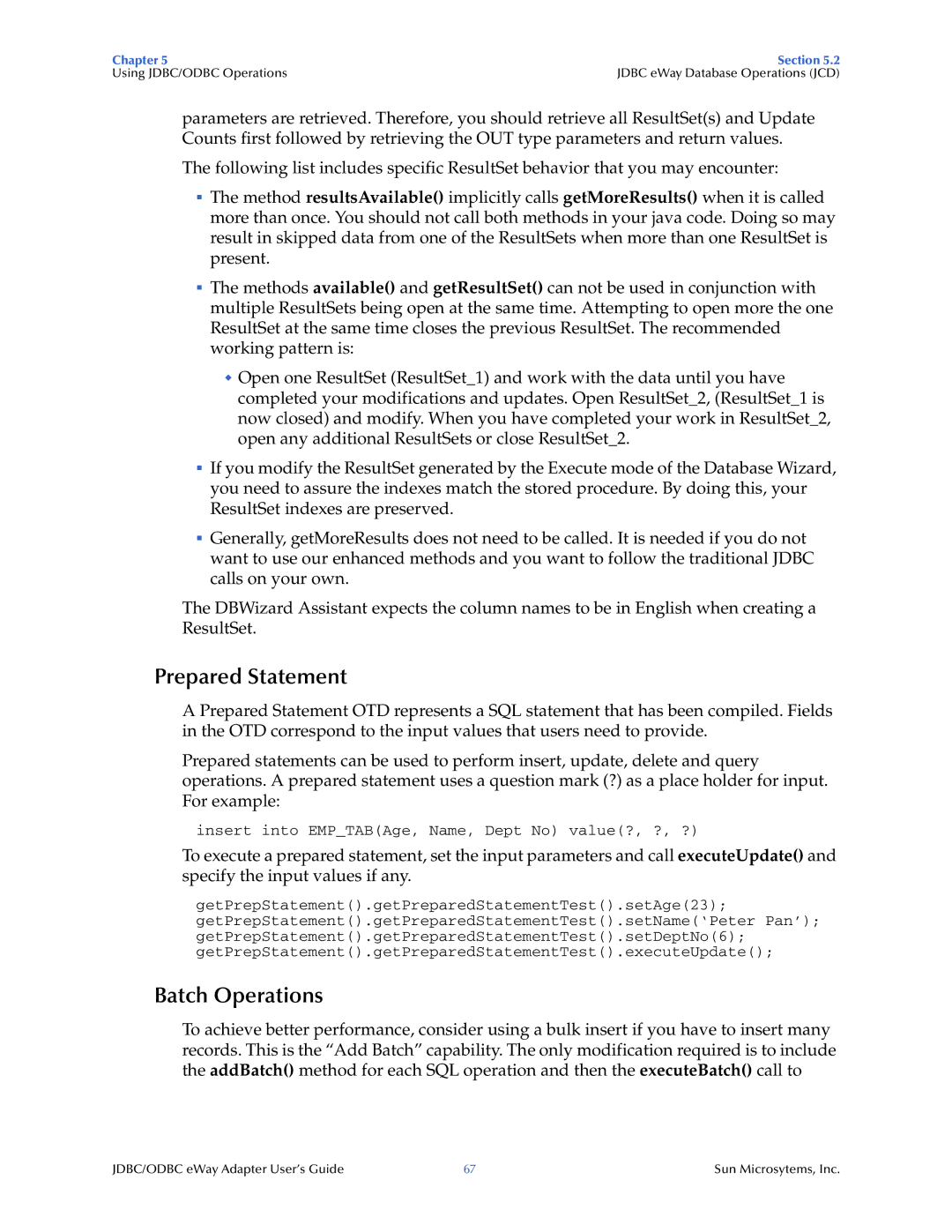Chapter 5 | Section 5.2 |
Using JDBC/ODBC Operations | JDBC eWay Database Operations (JCD) |
parameters are retrieved. Therefore, you should retrieve all ResultSet(s) and Update Counts first followed by retrieving the OUT type parameters and return values.
The following list includes specific ResultSet behavior that you may encounter:
The method resultsAvailable() implicitly calls getMoreResults() when it is called more than once. You should not call both methods in your java code. Doing so may result in skipped data from one of the ResultSets when more than one ResultSet is present.
The methods available() and getResultSet() can not be used in conjunction with multiple ResultSets being open at the same time. Attempting to open more the one ResultSet at the same time closes the previous ResultSet. The recommended working pattern is:
Open one ResultSet (ResultSet_1) and work with the data until you have completed your modifications and updates. Open ResultSet_2, (ResultSet_1 is now closed) and modify. When you have completed your work in ResultSet_2, open any additional ResultSets or close ResultSet_2.
If you modify the ResultSet generated by the Execute mode of the Database Wizard, you need to assure the indexes match the stored procedure. By doing this, your ResultSet indexes are preserved.
Generally, getMoreResults does not need to be called. It is needed if you do not want to use our enhanced methods and you want to follow the traditional JDBC calls on your own.
The DBWizard Assistant expects the column names to be in English when creating a ResultSet.
Prepared Statement
A Prepared Statement OTD represents a SQL statement that has been compiled. Fields in the OTD correspond to the input values that users need to provide.
Prepared statements can be used to perform insert, update, delete and query operations. A prepared statement uses a question mark (?) as a place holder for input. For example:
insert into EMP_TAB(Age, Name, Dept No) value(?, ?, ?)
To execute a prepared statement, set the input parameters and call executeUpdate() and specify the input values if any.
getPrepStatement().getPreparedStatementTest().setAge(23); getPrepStatement().getPreparedStatementTest().setName(‘Peter Pan’); getPrepStatement().getPreparedStatementTest().setDeptNo(6); getPrepStatement().getPreparedStatementTest().executeUpdate();
Batch Operations
To achieve better performance, consider using a bulk insert if you have to insert many records. This is the “Add Batch” capability. The only modification required is to include the addBatch() method for each SQL operation and then the executeBatch() call to
JDBC/ODBC eWay Adapter User’s Guide | 67 | Sun Microsytems, Inc. |
